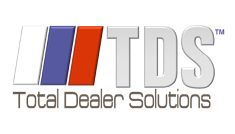A parts physical inventory
is a process where an automotive dealership physically counts its entire parts inventory. It is recommended that a parts physical inventory be conducted every year.
Why should I do a parts physical inventory?
Physical accounting of the dealership’s parts assets is critical in managing a dealership’s capital investment. A physical inventory is also essential to keep accurate counts of parts that are on hand. By actively managing your parts inventory you can greatly improve your inventory performance and increase your return on investment.
How do I prepare for a parts physical inventory?
Inventory quality and accuracy are dependent upon proper preparation. Follow these recommendations to prepare for your parts physical inventory:
- Make sure all bin locations are clearly marked.
- Verify every part is bin located in the DMS and has a clearly visible label.
- Clean and arrange bin.
- Match part that is shown on bin tag.
- Check for empty boxes—SHAKE!
- Straighten boxes, numbers facing forward.
- If possible, consolidate dual bin locations.
- Organize tops of bins.
- Reseal open boxes.
- Straighten out bin, if necessary, as you go.
- Remove trash.
- Remove damaged parts.
- Make sure each box has a part in it.
- Check area behind part.
- Check for Group # change.
- Readjust the bin layout whenever possible to accommodate parts.
- Purge the bins of unwanted parts and parts labels.
- Verify that all part numbers have prices. This can be detected by running (List Parts with No Cost Report).
- Verify that you have no minus balances in the inventory. (List Parts with Negative On-Hand).
- Verify that all part numbers have bin locations and that any overstock parts have alternate bin locations that can be counted prior to the physical. (List Parts With Missing Location).
- Return all display parts to the proper bin location.
- Segregate Pre-Paid special orders. Clean and organize the special order area.
- Check dirty core inventory and organize area, verify all dirty cores have been turned in from the service department.
- Determine items in inventory not to be counted and tape off.
- Run a list of the obsolete parts. Return or scrap these parts as necessary.
- Verify all parts that do not match the manufacturer price tape.
- Review the Open Invoices report to verify all open invoices are legitimate. Research and correct any problems.
- Contact DMS support to schedule the inventory date so that there are no automatic updates performed on the inventory day. Verify all necessary after-hours support phone numbers to have available for inventory day.
Why should I hire a company to do my parts physical inventory?
Leave the inventory business to the experts and focus your staff’s attention on daily business operations. A third party inventory serves as an audit, protecting your dealership from theft, damage, waste and vulnerability to market shifts. The end result is an impartial, precise snapshot of the health and viability of your parts personnel and department.
Auditing hundreds of dealerships nationwide, we’ve seen the best and the worst operating parts departments and everything in between. We make recommendations for instant and long term improvement which will have an immediate and long lasting effect on the efficiency and profitability of your parts department. In fact, the implementation of our recommendations over the
course of a year more than covers the cost of the inventory.
